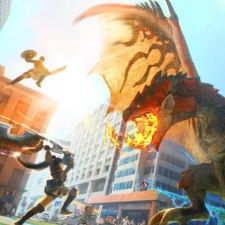Niantic launched its latest title, Monster Hunter Now, on September 14, and it’s already proven to be a massive success, with five million downloads in its first week alone, according to research and advisory firm Naavik. making it Niantic’s fourth largest launch to date, and its fourth highest grossing game with approximately $14 million during that period - and is poised to overtake Pikmin Bloom’s $20 million in lifetime revenue to become its third highest-grossing game.
The game has proven to be particularly successful on the iOS market, with around $12 million in revenue. In contrast, Google Play has seen the game generate around $2 million, according to Sensor Tower data.
The Monster Hunter franchise has seen more than 85 million sales across eighteen titles, making it developer Capcom’s second highest selling franchise behind Resident Evil. The company has spent four years developing Monster Hunter Now with Niantic, and it appears that the work has been fruitful.
Notably, despite the massive success of Pokemon Go, Niantic has seen its fair share of failures in recent years, including the shuttering of Harry Potter: Wizards Unite and NBA All-World, the cancellation of AR title Marvel: World of Heroes, and the layoffs of 25% of its workforce.
In short, Niantic has struggled to replicate Pokemon Go’s success, with Naavik noting that the core gameplay loop of the franchise is “precisely delivered in Pokemon Go’s location-based format.”
“The importance of this fit is often overlooked in location-based game design, as seen in Niantic's attempts to force-fit the Harry Potter and NBA core fantasies into this format.”
A monster hit
While the company has somewhat struggled to bring several franchises into the realm of AR, Monster Hunter appears a natural fit thanks to its relative similarities to the Pokemon franchise itself - both focus on hunting monsters in diverse ecosystems.
At present, around 70% of Monster Hunter Now’s revenue comes from Japan, and it appears that the game was designed with the Japanese market in mind, with the avatar selection featuring characters with Asian features in an attempt to court Japanese users.
The company also ran an in-game event at Tokyo Game Show on September 24, resulting in a revenue spike of over $1 million.
The game also features light RPG progression systems, helping to cater to the Japanese market. While Naavik notes that “Niantic could’ve leaned harder into JRPG mechanics by adding a little more complexity in its progression systems - especially if Japan was always going to be the game’s key market,” the lighter RPG elements “work for a global player base.”
We listed Niantic and Capcom as two of the top 50 mobile game makers of 2023.






















